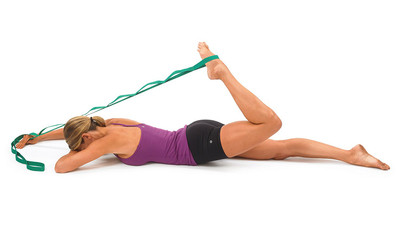 19th Mar 2021
19th Mar 2021
Stretching 101: At Home and in Rehabilitation
Stretching is an important element of rehabilitation and for improving flexibility in everyday life. One of the goals of physical therapy is to show patients the best and safest ways to stretch their joints and limbs through the full range of motion.
Stretching is the lengthening of muscles in order to improve both muscle flexibility and joint range of motion. Stretching should be a part of all exercise and rehabilitation programs. Not only will stretching help prepare the body for more strenuous activity, but it will help decrease the risk of soreness and injury, using the right techniques.
The Benefits of Stretching
Stretching has many benefits, including:
Improved flexibility of muscles and joints: Flexibility helps improve both daily activities and athletic performance. From bending over to tie your shoes to reaching above your head to a high shelf, flexibility is an important part of day-to-day activities. Unfortunately, flexibility diminishes for most people as they age, but luckily with a stretching regimen it’s possible to regain and maintain the pliability of the muscles.
Enhanced circulation: Stretching helps improve the blood flow to the muscles. This is important for two reasons: it helps nourish the muscles and helps remove waste byproducts from the muscle tissue. This will decrease muscle soreness after physical activity and improve recovery after an injury.
Improved posture: Since stretching helps protect against muscle tightness, it aids in maintaining proper and neutral posture. This is especially important for minimizing tenderness both before, during and after physical activity.
Enhanced coordination: Coordination is the combination of movements to perform specific tasks. By maintaining the full range-of-motion through the joints, coordination and balance are improved. This helps keep people mobile, but also decreases injury risks.
Proper Stretching Technique
As with any physical activity, there are proper techniques for patients and practitioners to utilize to help avoid unnecessary injuries. Some important tips to use when stretching include:
Warm up first: Most people think they should stretch first before warming up, but actually the opposite is true. Stretching muscles when they're cold increases your risk of pulled muscles. Before stretching, do a short warm up of at least 5 minutes to warm the muscles and prepare them for lengthening safely.
Hold each stretch for at least 30 seconds: It’s important to give your muscles time to lengthen safely. This takes at least 30 seconds, but in tighter areas can take up to 60 seconds for problem areas. While this may seem like a long time for some patients, it’s important to take this time to get the full benefit of the stretch. Using a watch or clock is an easy way to make sure stretches are being held long enough. Using a stretching tool can also be helpful if it’s difficult for the patient to hold the stretch on their own.
Avoid bouncing: It can be tempted to add to the stretch by bouncing but bouncing during a stretch can cause small tears (microtears) in the muscle, which leave scar tissue as the muscle heals. The scar tissue tightens the muscle even further leading to decreased flexibility and the possibility of pain. When stretching, remain static in the hold to allow the muscle to safely lengthen.
Keep the stretch pain-free: Another thing to remember is the importance of avoiding pain during stretching. If there is pain during the stretch, the body is indicating that the muscles have been stretched too far. If pain is felt, it’s important to back off the stretch to the point where it decreases and then hold the stretch for the allotted time.
Use a Stretching Strap: Lack of flexibility is a common complaint whether in rehabilitation, in sports or just as a matter symptom of aging. A stretching strap can help patients during rehabilitation sessions or at home complete their stretching routines safely. With individual loops, the stretching strap allows people of all flexibility levels to safely lengthen their muscles and hold them for the necessary time.
Contact us today!
We can help rehabilitation practitioners and patients find the perfect devices and all necessary supplies and products to help treat your patients successfully. Contact us today and we’ll answer any questions you may have about the benefits of using each device and what accessories you’ll need! Call us today at 1-801-770-3328 for more information.






